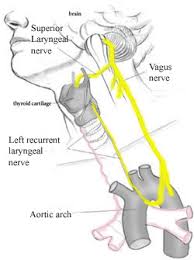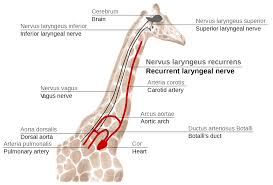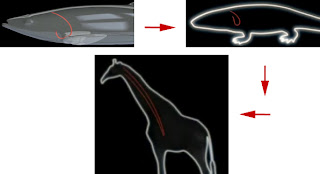In a previous blog post I had pointed out some common misconceptions about and arguments against evolution. In this blog post, I will be sharing some of what I feel to be the strongest evidence for evolution. The original title of this post was "Arguments for Evolution: Why should we believe?" I changed the title because evolution isn't about belief. I believe in evolution as much as I believe in atoms, gravity, and that germs cause disease. Science doesn't ask for our belief in anything.1
This evidence I present will seek to answer the following questions: What is the fossil evidence for evolution? What can we learn from living animals about evolution? Does evolution present any testable predictions?
What is the fossil evidence for evolution?
One of the common arguments against evolution is "where are the transition fossils". This is perhaps the weakest of all arguments against evolution. The transition fossils (or casts of the fossils) are available in every reliable natural history museum. Wikipedia has an extensive list of transition fossils. These fossils include the human evolution of Australopithecus to Homo Habilis to Homo Erectus to Homo Sapien. They include evolution of invertebrates to fish. They even include the evolution of insects.
The fossil evidence is extensive, and the argument that we don't have fossil evidence is tired. Any evolution deniers will quickly say "just show me the transition fossils" or "where is the missing link" when in fact every new fossil found is like the hydra from greek mythology - finding one transition fossil just creates two new transitions whose fossils don't exist.
What can we learn from living animals about evolution?

The Laryngeal Nerve
An interesting evidence for evolution is the laryngeal nerve - the nerve that supplies motor function and sensation to your larynx (voice box). If you were to design the nervous system in an obvious way the laryngeal nerve would leave the spinal chord somewhere in your neck and travel directly to the larynx. Instead, the laryngeal nerve leaves the spinal chord at the neck, travels down into the chest, wraps around an artery leaving the heart, and then travels back up the chest, up the neck, and finally ending at the larynx.

This odd path is even more exaggerated in a giraffe, where the nerve travels 15 feet out of the way to wrap around the heart and return to the larynx - only a short distance from where it originally left the spinal chord.
So why does the nerve take such a convoluted path? Evolutionary theory describes an ancestor to all vertebrates much like modern fish. The same nerve in fish takes a much more direct path from the spinal chord to the larynx. As evolution progressed, the laryngeal nerve was caught on the wrong side of the heart. With each generation, natural selection lengthened the neck and with it the laryngeal nerve.
 Ensatina
Ensatina
A second modern day example of evolution is the Ensatina of California. These salamanders live in a ring around the Sierra Nevada mountains and give an interesting example of speciation. Where does one species end and a new species begin? A simple definition is that two animals are different species if they are unable to breed fertile offspring.
In this example, the salamander with the red label interbreed with the salamander with the yellow label, the yellow interbreeds with the blue and orange, and the blue interbreeds with the pink. However, the pink does not interbreed with the red. It is safe to say that the pink and the red salamanders are different species - but where did the speciation occur? Evolution does not happen in large jumps. It happens slowly, with changes every generation.
Does evolution present any testable predictions?This evidence I present will seek to answer the following questions: What is the fossil evidence for evolution? What can we learn from living animals about evolution? Does evolution present any testable predictions?
What is the fossil evidence for evolution?
One of the common arguments against evolution is "where are the transition fossils". This is perhaps the weakest of all arguments against evolution. The transition fossils (or casts of the fossils) are available in every reliable natural history museum. Wikipedia has an extensive list of transition fossils. These fossils include the human evolution of Australopithecus to Homo Habilis to Homo Erectus to Homo Sapien. They include evolution of invertebrates to fish. They even include the evolution of insects.
The fossil evidence is extensive, and the argument that we don't have fossil evidence is tired. Any evolution deniers will quickly say "just show me the transition fossils" or "where is the missing link" when in fact every new fossil found is like the hydra from greek mythology - finding one transition fossil just creates two new transitions whose fossils don't exist.
What can we learn from living animals about evolution?
The Laryngeal Nerve
An interesting evidence for evolution is the laryngeal nerve - the nerve that supplies motor function and sensation to your larynx (voice box). If you were to design the nervous system in an obvious way the laryngeal nerve would leave the spinal chord somewhere in your neck and travel directly to the larynx. Instead, the laryngeal nerve leaves the spinal chord at the neck, travels down into the chest, wraps around an artery leaving the heart, and then travels back up the chest, up the neck, and finally ending at the larynx.
This odd path is even more exaggerated in a giraffe, where the nerve travels 15 feet out of the way to wrap around the heart and return to the larynx - only a short distance from where it originally left the spinal chord.
So why does the nerve take such a convoluted path? Evolutionary theory describes an ancestor to all vertebrates much like modern fish. The same nerve in fish takes a much more direct path from the spinal chord to the larynx. As evolution progressed, the laryngeal nerve was caught on the wrong side of the heart. With each generation, natural selection lengthened the neck and with it the laryngeal nerve.
 Ensatina
EnsatinaA second modern day example of evolution is the Ensatina of California. These salamanders live in a ring around the Sierra Nevada mountains and give an interesting example of speciation. Where does one species end and a new species begin? A simple definition is that two animals are different species if they are unable to breed fertile offspring.
In this example, the salamander with the red label interbreed with the salamander with the yellow label, the yellow interbreeds with the blue and orange, and the blue interbreeds with the pink. However, the pink does not interbreed with the red. It is safe to say that the pink and the red salamanders are different species - but where did the speciation occur? Evolution does not happen in large jumps. It happens slowly, with changes every generation.
One important qualification of a scientific theory is that any new idea must provide some testable hypothesis. How can we know that we aren't just deceiving ourselves if we can't test the ideas we've come up with?
Human Chromosome 2
Chromosomes are highly condensed structures made of deoxyribonucleic acid (DNA). DNA, of course, being the key building block of all life. DNA stores our genetic information.
 Human chromosome 2 gave a testable hypothesis for evolution. If apes and humans truly have a common ancestor, then we should have the same number of chromosomes. As it turns out, we do not have the same number of chromosomes - humans have 23 pairs and apes have 24 pairs. This is actually a big problem for evolution as a viable theory. If at any point a chromosome was spontaneously lost or gained it would result in serious consequences (either miscariage, or a phenotypic disorder like Down Syndrome or Turner Syndrome). Evolutionists predicted that at some point a chromosome fusion happened (that is, two chromosomes combined into one large chromosome). In this way, no genetic information would be lost and a difference in chromosomes would not disprove evolution.
Human chromosome 2 gave a testable hypothesis for evolution. If apes and humans truly have a common ancestor, then we should have the same number of chromosomes. As it turns out, we do not have the same number of chromosomes - humans have 23 pairs and apes have 24 pairs. This is actually a big problem for evolution as a viable theory. If at any point a chromosome was spontaneously lost or gained it would result in serious consequences (either miscariage, or a phenotypic disorder like Down Syndrome or Turner Syndrome). Evolutionists predicted that at some point a chromosome fusion happened (that is, two chromosomes combined into one large chromosome). In this way, no genetic information would be lost and a difference in chromosomes would not disprove evolution.As it turns out, human chromosome 2 is a fusion of two chromosomes. There are four telomeres (which begin and end a chromosome) and two centromeres (which are found at the center of a chromosome).2 Showing that human chromosome 2 is fused is not enough to prove that we have a common ancestor with apes. However, this evidence is strongly supported by the identification in chimpanzees of exactly which chromosomes were fused.
There is strong evidence for evolution. Just as my previous post was in no means a complete list of all the arguments used to refute evolution, this post in no way contains all the evidence. I chose the evidence that I see as the most compelling.
Do you have better evidence for evolution that you think I've left out? Have I misrepresented the evidence? Is this evidence not sufficient? Either way, leave a comment on this page or on in the comments for this post. I'd love to hear your thoughts.
Notes
[1] A great recent blog post on this subject can be found here. I'm sure Sam may disagree with my statement, though.
[2] Research has shown a link between chromosome 2 and intelligence in humans. Of course, this doesn't mean that the fusion of human chromosome 2 is responsible for superior intelligence as compared to the rest of the Hominidae family (You know, us and the rest of the apes), it just means that a correlation has been found between chromosome 2 and intelligence among humans.

